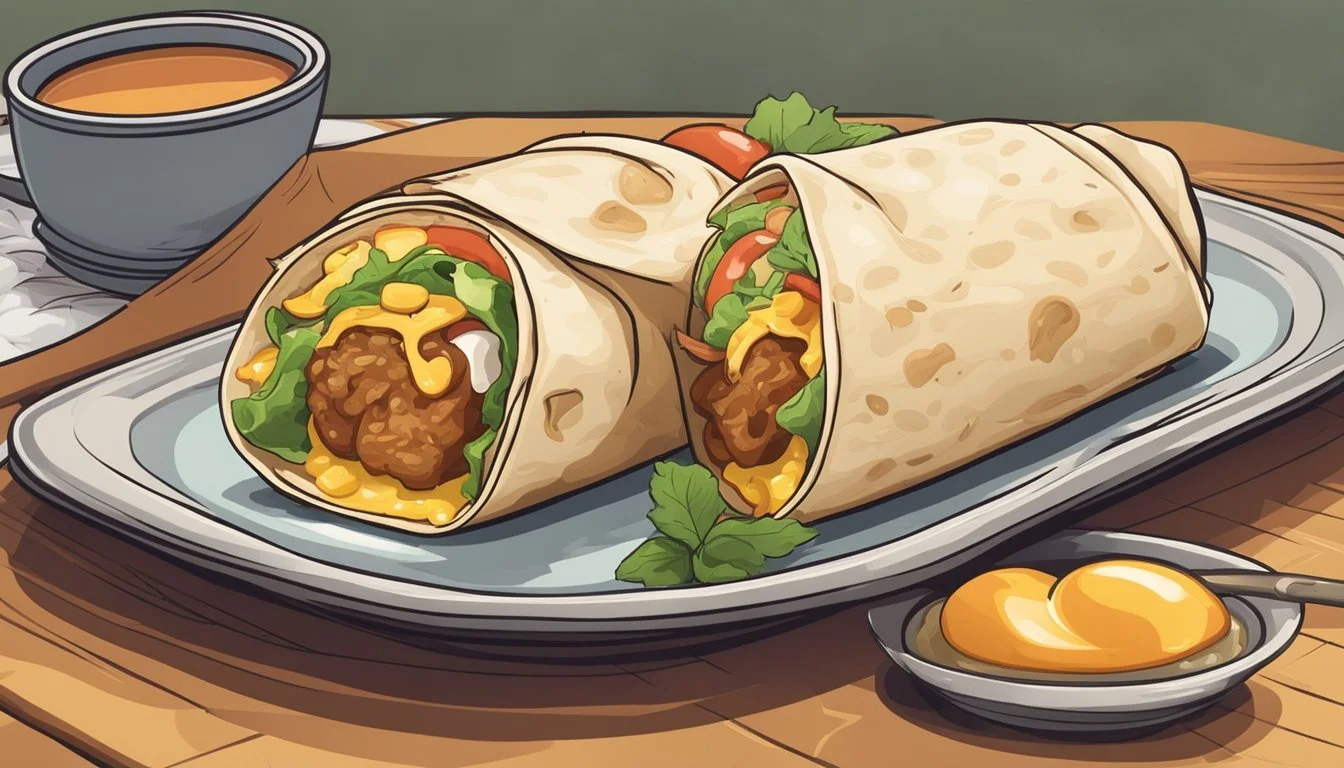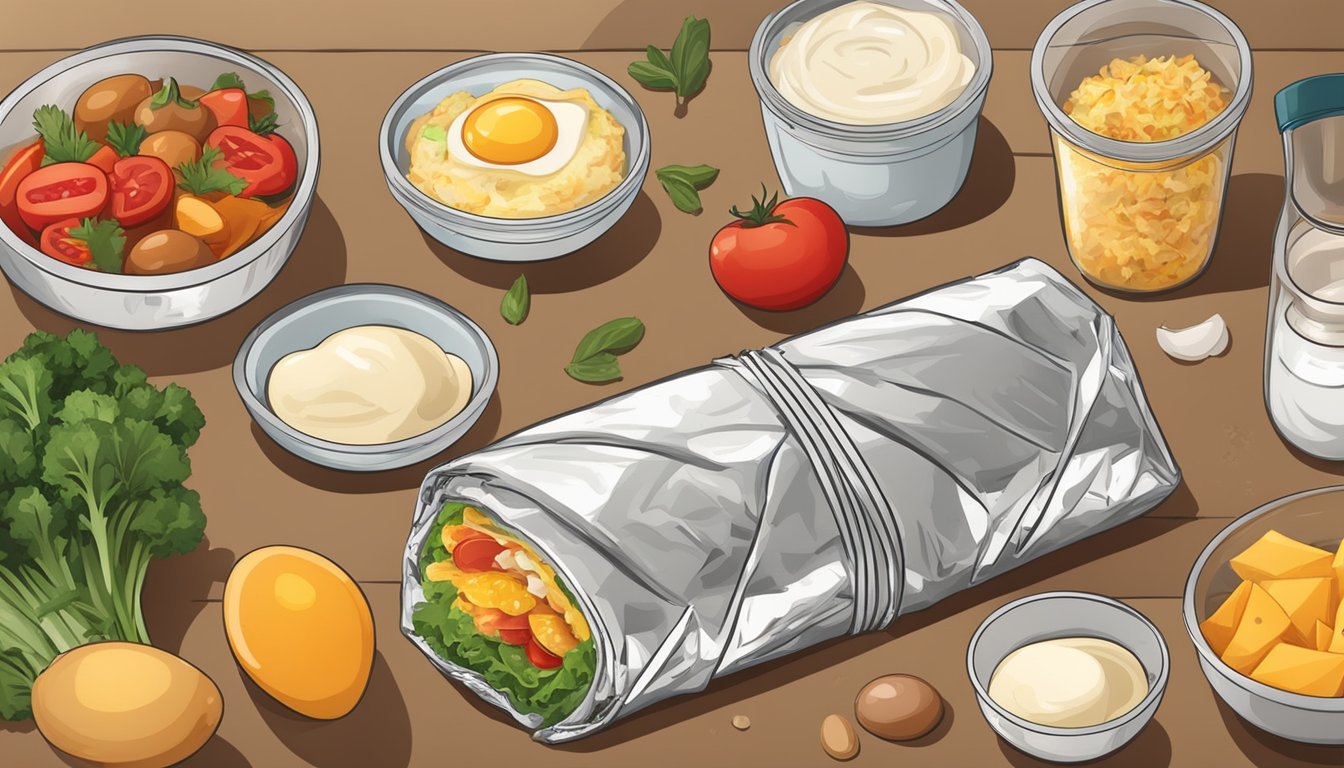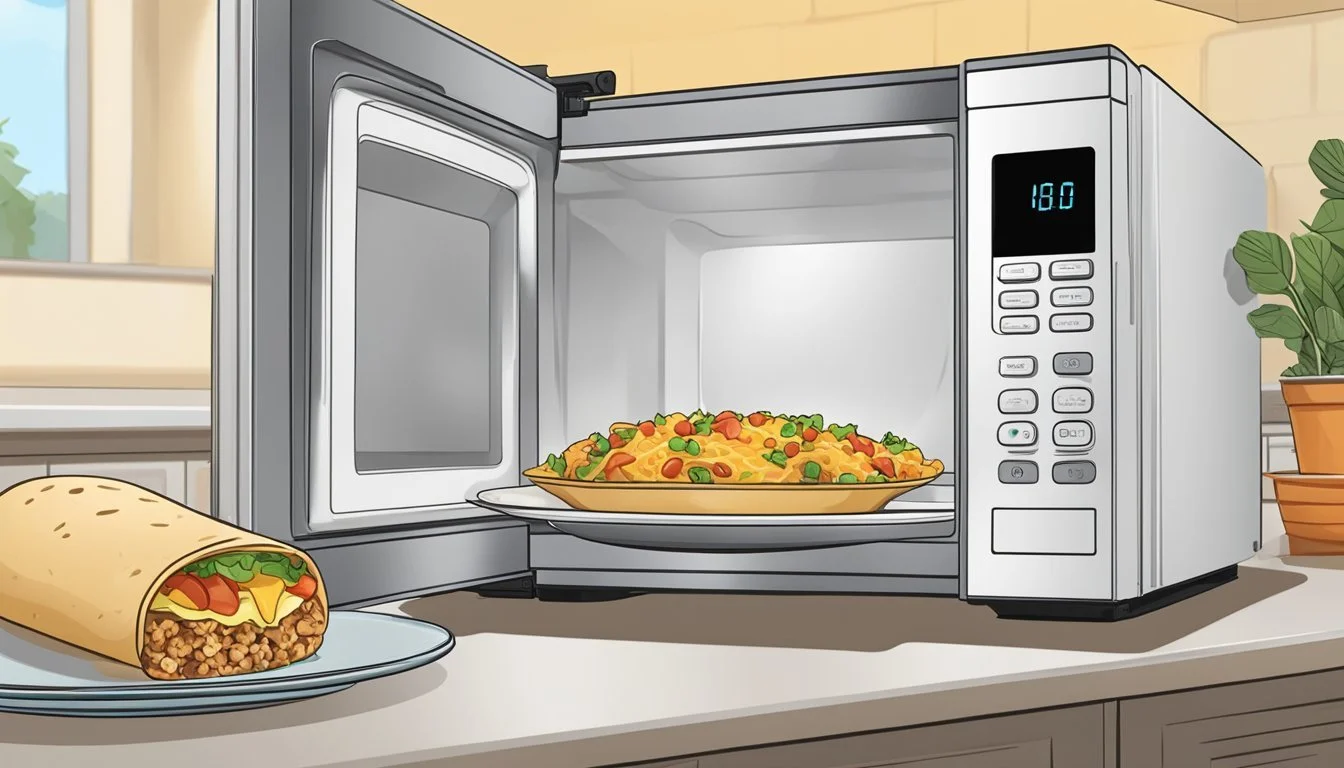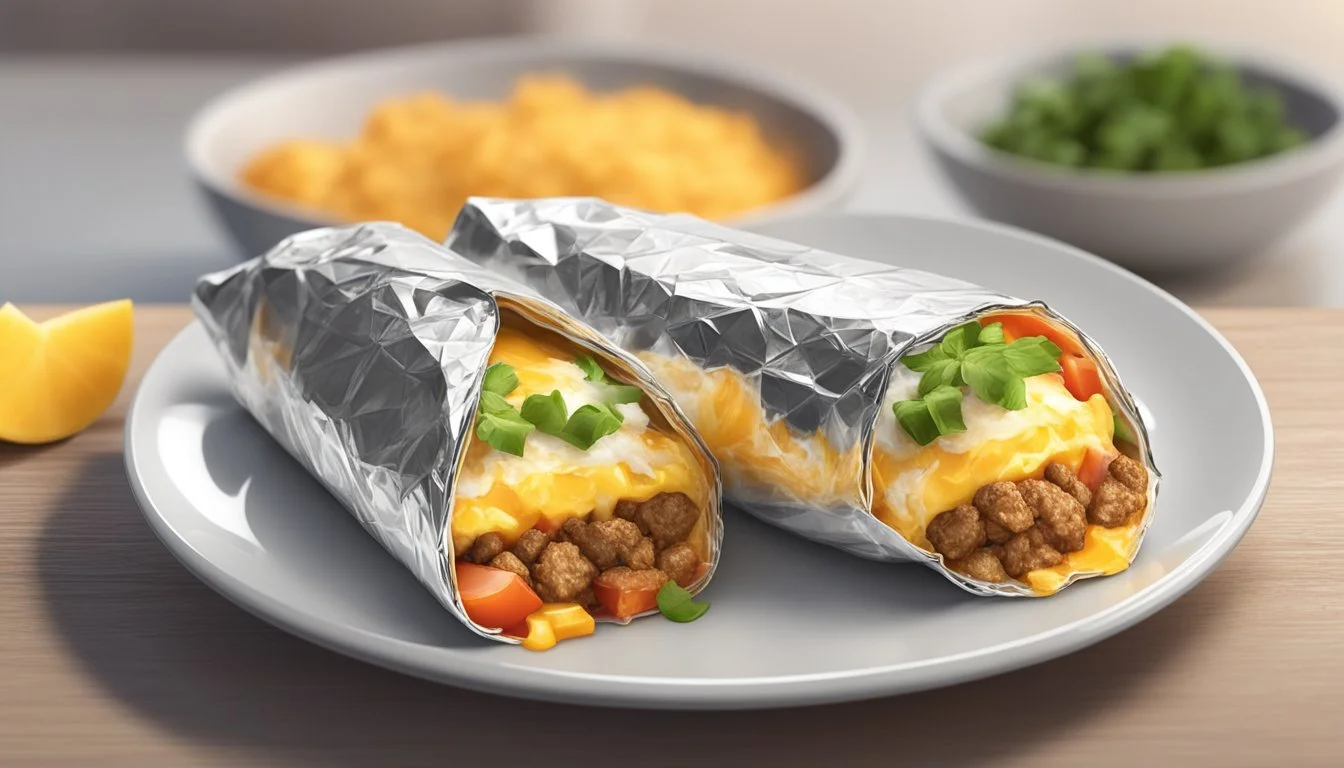How Long Do Breakfast Burritos Last?
Storage Tips and Shelf Life
Breakfast burritos are a popular and convenient option for a quick meal, whether you're rushing out the door in the morning or looking for a satisfying snack later in the day. They are typically made with eggs, cheese, and your choice of meat, vegetables, and seasoning, all wrapped in a warm tortilla. A breakfast burrito can last in the fridge for up to 3-5 days when properly stored. This makes them an excellent choice for meal prepping, ensuring you have a hearty breakfast ready to go throughout the week.
The shelf life of breakfast burritos can depend on several factors, such as the freshness of the ingredients used and how well they are stored. If you follow best practices, like using airtight containers and keeping your fridge at the correct temperature, your burritos will stay fresh longer. Be mindful of the ingredients that may spoil faster, like avocados or salsa, which can affect the overall longevity of your burrito.
By understanding how to store breakfast burritos and knowing their shelf life, you can make meal planning easier and more efficient. Whether you're a busy professional or a parent juggling multiple tasks, having a ready-to-eat breakfast option can simplify your mornings and keep you fueled throughout the day.
Understanding Breakfast Burritos
Breakfast burritos are a popular and versatile meal option that can be customized with numerous ingredients to suit individual preferences. These burritos often include a combination of proteins, vegetables, and other components wrapped in tortillas.
Essential Ingredients
Breakfast burritos typically feature tortillas, which are used to wrap all the fillings. Common fillings include scrambled eggs, which provide a rich source of protein, and cheese, such as shredded cheddar, which adds flavor and creaminess. Breakfast sausage or bacon are often included for their savory taste.
Vegetables like bell peppers, onions, and tomatoes are frequently added to introduce more nutrients and textures. Hash browns or tater tots can give a satisfying crunch and added carbs. Beans, especially black beans, offer additional protein and fiber, making the burritos more filling.
Popular Variations
There are countless variations to accommodate different tastes and dietary needs. A vegetarian breakfast burrito might replace meat with avocado, mushrooms, or kale. For a healthier option, some people use turkey sausage or ham instead of traditional bacon or sausage. Salsa or fresh pico de gallo is often added for an extra kick of flavor.
Popular variations can include the all-veggie burrito, which is packed with veggies like lettuce, peppers, and mushrooms. Some prefer the Southwest style with corn, black beans, and pepper jack cheese. There are also breakfast burritos tailored for those focusing on lower carb intake, using egg whites and spinach.
Nutritional Value
The nutritional value of a breakfast burrito can vary widely depending on the ingredients used. A basic burrito with eggs, sausage, and cheese wrapped in a flour tortilla can have around 300-500 calories. Adding veggies like peppers and tomatoes increases the vitamin and mineral content without significantly boosting calories.
Protein content can be high, particularly with ingredients like eggs, sausage, and beans, making it a good option for those looking to start their day with a protein-rich meal. On the downside, traditional breakfast burritos can be high in sodium and saturated fats due to the cheese and meat. Opting for vegetarian or lean meat options can reduce these levels significantly, along with choosing whole wheat tortillas for added fiber.
Preparation Techniques
Mastering the preparation of breakfast burritos involves proper assembly and cooking methods, ensuring they are tasty, healthy, and stay fresh for days.
Assembling Breakfast Burritos
Each breakfast burrito starts with choosing the right tortilla. Flour tortillas work best due to their flexibility. Lay the tortilla flat and add your desired fillings, such as scrambled eggs, cheese, cooked sausage, or bacon. For those preferring a dairy-free or vegan option, tofu scramble and plant-based cheese can be excellent choices.
Healthy fillings may include spinach, tomatoes, or black beans. To make-ahead burritos, wrap each burrito tightly in foil or plastic wrap, then store in the fridge or freezer. Label with the date for easy tracking.
Cooking and Customizing Tips
Cook scrambled eggs until fully set and not runny to avoid sogginess. Add seasoned fillings like salsa, potatoes, or jalapeños for a spicy kick. For those who prefer a dairy-free option, replace cheese with avocado slices for a creamy texture.
Reheating is simple: unwrap, place on a microwave-safe plate, cover with a damp paper towel, and heat for 1-2 minutes. For a crispy finish, reheat in a skillet or oven. Customize with hot sauce, fresh herbs, or additional vegetables to suit individual tastes.
Storing Breakfast Burritos
Proper storage of breakfast burritos ensures they stay fresh and safe to eat. Effective methods include refrigeration for shorter-term storage and freezing for long-term preservation. These techniques are essential for meal prepping and enjoying make-ahead breakfast burritos.
Refrigeration Guidelines
Store breakfast burritos in the refrigerator by wrapping them individually in foil or plastic wrap. Placing them in an airtight container or resealable plastic bag provides additional protection.
Typically, breakfast burritos last 3 to 4 days in the fridge. This timeframe is followed to maintain freshness and prevent spoilage.
It's crucial to ensure that the burritos cool down to room temperature before refrigerating. This step helps to prevent condensation from forming inside the wrapping, which can affect both the texture and safety of the burrito.
Freezing Instructions
To freeze breakfast burritos, wrap each one tightly in foil or plastic wrap and then place them in a resealable freezer bag. Label each bag with the date for tracking.
Frozen breakfast burritos can last up to 1 to 2 months without losing quality.
When reheating, remove the foil and either microwave the burrito for 1-2 minutes or bake it in an oven preheated to 350°F (175°C) for about 20 minutes. For even heating, slice the burrito in half and wrap each piece in a paper towel before microwaving.
Freezing is an excellent option for those who prefer meal prepping and having make-ahead breakfast burritos ready to go.
Reheating and Serving
Breakfast burritos can be conveniently reheated using a variety of methods to restore their warmth and flavor. The key methods to focus on include microwave reheating, oven warming, and alternative options like stovetop and air fryer.
Microwave Reheating
To reheat a breakfast burrito using a microwave, begin by removing any plastic wrap or aluminum foil. Wrap the burrito loosely in a damp paper towel to prevent it from drying out.
Place the wrapped burrito on a microwave-safe plate. Heat on high for approximately 60 seconds. Then, flip the burrito over and heat for an additional 60-90 seconds. Ensure the center is fully warmed through before consuming.
This method is quick and efficient, perfect for those in a hurry, and works well whether the burrito is refrigerated or frozen.
Oven Warming Methods
For reheating breakfast burritos using an oven, preheat the oven to 400°F (200°C). Place the burrito on a sheet pan or on aluminum foil in the center of the oven.
Reheating times vary based on the burrito's size and whether it's refrigerated or frozen:
Refrigerated Burritos: Bake for 20-30 minutes.
Frozen Burritos: They may need a longer time, approximately 30-40 minutes.
Check the burrito to ensure it is heated evenly throughout. This method offers a crispy texture to the burrito, enhancing the overall taste.
Alternative Reheating Options
Alternative methods include stovetop and air fryer options. On the stovetop, place the burrito in a non-stick pan over medium heat. Cover and cook for about 4-5 minutes on each side until thoroughly heated.
For air fryer reheating, preheat the air fryer to 380°F (193°C). Place the burrito inside and heat for 8-12 minutes. The exact time can vary depending on the burrito's size and filling.
Both methods ensure a crispy exterior and warm interior. They are suitable for those who prefer a texture different from that achieved with a microwave.
Safety and Quality
When dealing with breakfast burritos, it's crucial to understand both how long they last and the best methods to store them to maintain safety and quality. This includes considering factors like shelf life and techniques for preserving their quality.
Shelf Life
Breakfast burritos, when refrigerated at or below 40°F (4°C), can last between 3 to 5 days effectively. The shelf life is influenced by ingredients such as eggs, which have a shorter lifespan.
Example Shelf Life:
Storage Method Duration Refrigerator 3-5 days Freezer Up to 1 month Room Temperature Less than 2 hours
Leftovers should always be sealed in airtight containers or wrapped tightly in foil to prevent exposure to air, which could lead to faster spoilage. If kept at room temperature for over two hours, the risk of bacterial growth significantly increases, making the burrito unsafe for consumption.
Quality Preservation
To preserve the quality of breakfast burritos, proper wrapping is essential. Wrapping burritos individually in plastic wrap or aluminum foil and placing them in an airtight container prevents them from becoming soggy or losing their texture.
Tip for freezing: Freeze burritos flat to ensure even thawing. Once thawed in the refrigerator, they can be reheated in a microwave or oven but should be consumed within one day to retain their freshness.
Regularly checking the smell and appearance of breakfast burritos before eating can help detect any signs of spoilage, such as off odors or changes in texture. This step ensures not only safety but also enjoyment of the meal.
Additional Tips and Advice
To maximize the freshness and taste of breakfast burritos, employ practical meal prep strategies, consider various sauces and toppings, and ensure they are easy to transport.
Meal Prep Strategies
Meal prepping breakfast burritos can save time on busy mornings. He should start by having all ingredients ready, such as cooked eggs, pork sausage, shredded cheddar cheese, diced tomatoes, and green onions. It's beneficial to create an assembly line to streamline the process.
Wrapping each burrito individually in foil, plastic wrap, or freezer bags helps prevent freezer burn. Labeling with dates ensures rotation of older burritos first. Properly stored in the fridge, breakfast burritos typically last 3-4 days. For longer storage, he can freeze them, where they maintain quality for up to three months.
Sauce and Topping Suggestions
Adding sauces and toppings can enhance flavors significantly. He could try classics like salsa, guacamole, and pico de gallo. For those who like some heat, hot sauce or fresh jalapeños can be added. Toppings such as cilantro, diced tomatoes, or green onions bring refreshing notes.
Experimenting with different cheeses, such as pepper jack alongside the standard shredded cheddar, offers variation. Cilantro lime crema or even a dollop of Greek yogurt can introduce new textures and flavors to the burrito.
Making Breakfast Burritos Portable
Portability is key for those with a busy lifestyle. He should ensure the burritos are securely wrapped. Using an insulated lunch bag helps maintain the temperature. If frozen, he can use the microwave's defrost setting to make it convenient.
For those who enjoy their burritos warm, a compact, portable food warmer can be another useful gadget. Consider separating wetter ingredients like guacamole or pico de gallo into small containers to add just before eating, avoiding soggy burritos.








